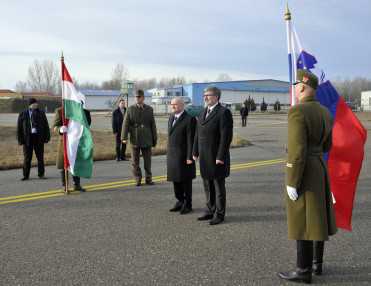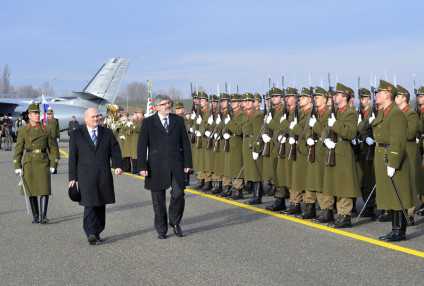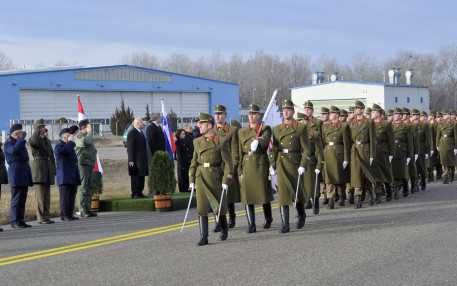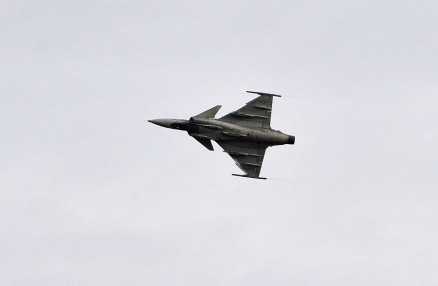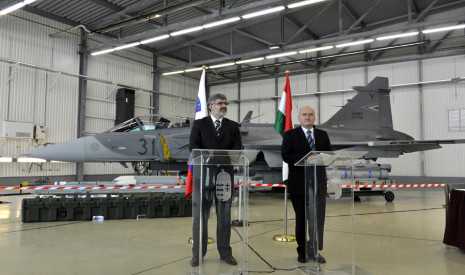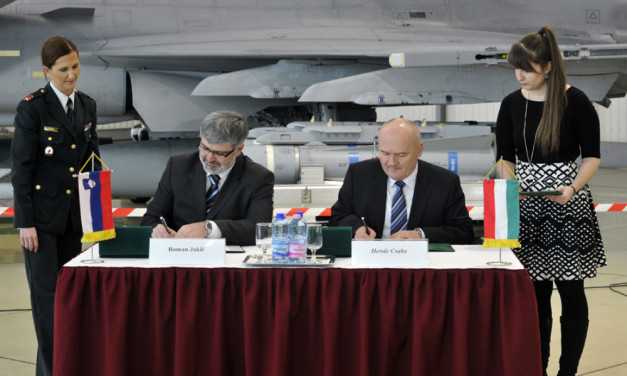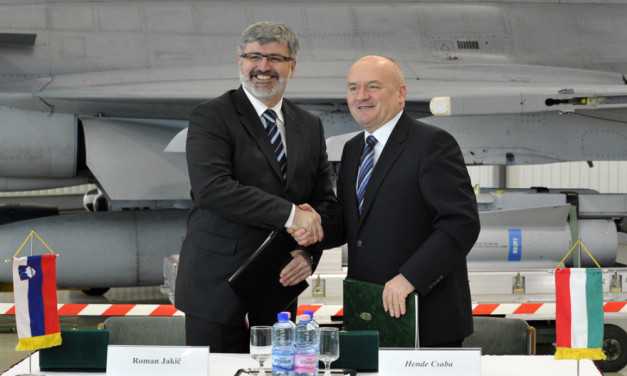Hungarian Gripens involved in the protection of Slovenian airspace
Szöveg: honvedelem.hu / MTI | 2014. január 17. 16:22On Friday Minister of Defence of Hungary Mr Csaba Hende and his Slovenian counterpart Minister of Defence Mr Roman Jakic signed the agreement allowing the Hungarian Gripens to participate in the defence of the airspace of Slovenia. The agreement is expected to come into force in the spring of 2014.
He emphasised that within the structure of NATO Hungary is equipped with fourth generation combat aircraft and this capability is increasingly important at present.
Mr Hende labelled international terrorism as one of the most considerable threats of our times as it may use hijacked civil aircraft as weapons. That is the fact which makes air policing necessary, the Hungarian defence minister said.
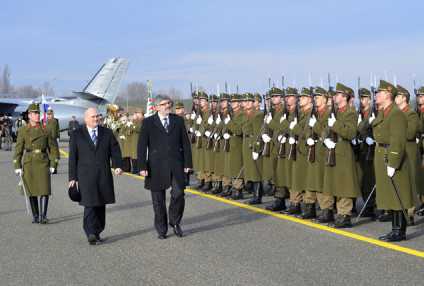
Mr Hende said that the agreement was mutually beneficial because it would contribute to the conduct of allied missions by Hungary, it would increase the operational experience of the personnel of the Hungarian Air Force, and Slovenia would also benefit from it as its airspace would be secured by two neighbouring countries.
Responding to a question Mr Hende said: the comprehensive modification of the Gripen-agreement is beneficial both for Hungary and the entire Alliance. He reminded of the fact that financial commitments became much easier and the effect of the agreement has been extended from 2016 to 2026. This change allows the Hungarian Defence Forces to get involved in the protection of the Slovenian airspace now, later on in the air policing activities over the Baltic States and to take up other lasting, long-term commitments, the Minister of Defence said.
As Mr Hende declared, the Slovenian mission has no additional costs involved as it will be carried out by the pilots at the expenses of the flight hours leased from Sweden.
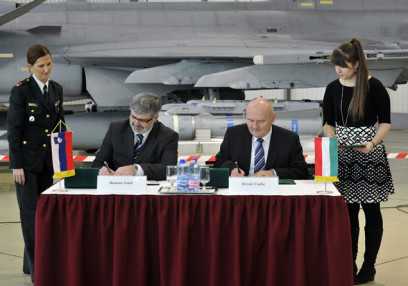
Slovenian Minister of Defence Mr Roman Jakic reminded of the fact that at its NATO accession in 2004 his country became a member of an international alliance which guarantees the security of the airspaces of nations of the European Union. That is why Slovenia decided not to make independent investments into its own airspace protection but to try to make partnerships within the alliance. In his opinion the cooperation between Hungary and Slovenia will further improve the strength of NATO and the efficiency of its actions.
After the takeoff of the propeller-driven airplane of the Slovenian Minister of Defence from Ljubljana airport Kecskemét air base was notified then the Hungarian readiness force was alerted. Afterwards two Gripen fighter aircraft “intercepted" the airplane of the Slovenian Minister of Defence and escorted it to Kecskemét air base thus the Hungarian pilots demonstrated their mission in the framework of an alert exercise. The Slovenian Minister of Defence was welcomed with military parade at Kecskemét air base.

The first agreement on military air space protection was signed by the representatives of the two countries in 1996. In accordance with it their unarmed military planes were allowed to enter the air spaces of either country in the framework of a week-long request for permission and a 24-hour information obligation. The agreement modification, signed at Kecskemét air base, lifts this ban and obligation for the sake of conducting air policing missions. The agreement is expected to come into force after the ratification procedures in the spring of 2014.
As NATO member states, Slovenia, Hungary and Italy are part of the integrated air defence system. In practice this means that the decision on whether the Hungarian or Italian air force is to be alerted is made at the NATO command post in Spain.
Photos by Gábor Galovtsik
